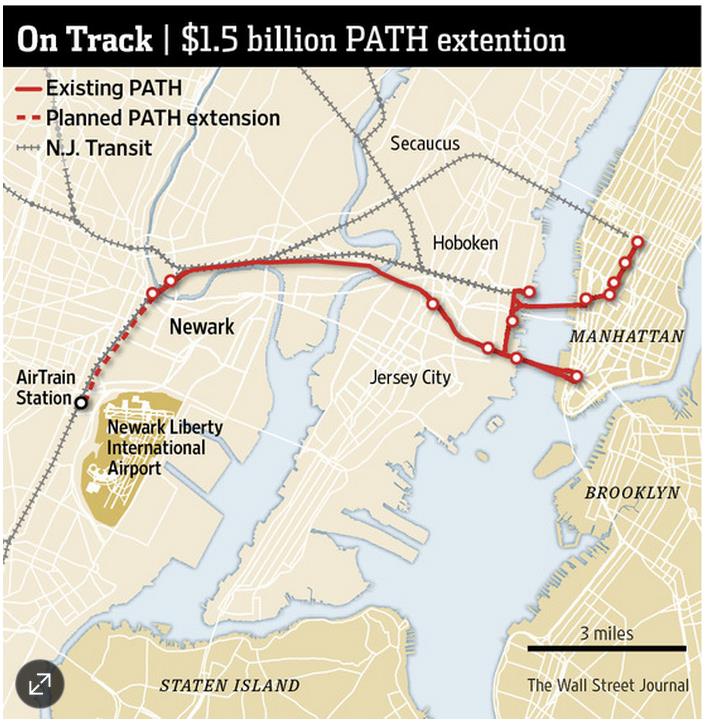
Mobilizing the Region recently explored the current and future capacity problems confronting trans-Hudson commuters and why the Port Authority Bus Terminal should be one of the Port Authority’s top transportation priorities. But how to pay for a project with continually rising cost estimates? One possible source of funds could be the proposed extension of PATH service to Newark Liberty International Airport.
Projected to cost $1.5 billion, the extension project would bring PATH trains from the current terminus at Newark Penn Station to the Newark AirTrain monorail station. From there, riders would transfer to the AirTrain for terminal access. Although the extension proposal has been heralded as a “one-seat ride” from Lower Manhattan to the airport, this arrangement provides, at minimum, a two-seat ride for travelers whose trips originate within luggage-lugging distance to the World Trade Center PATH station, and a three (or more) seat ride for travelers coming from elsewhere in New York City (the only current public transit one-seat ride is by bus).
There already exists a two-seat rail ride to Newark Liberty Airport from Manhattan: NJ Transit or Amtrak from New York Penn Station to the AirTrain, AirTrain to the terminal. And like the proposed PATH route, would be three or more seats if arriving at Penn Station by any means other than walking.
And overall, the current transit access map to Newark Airport is as follows:
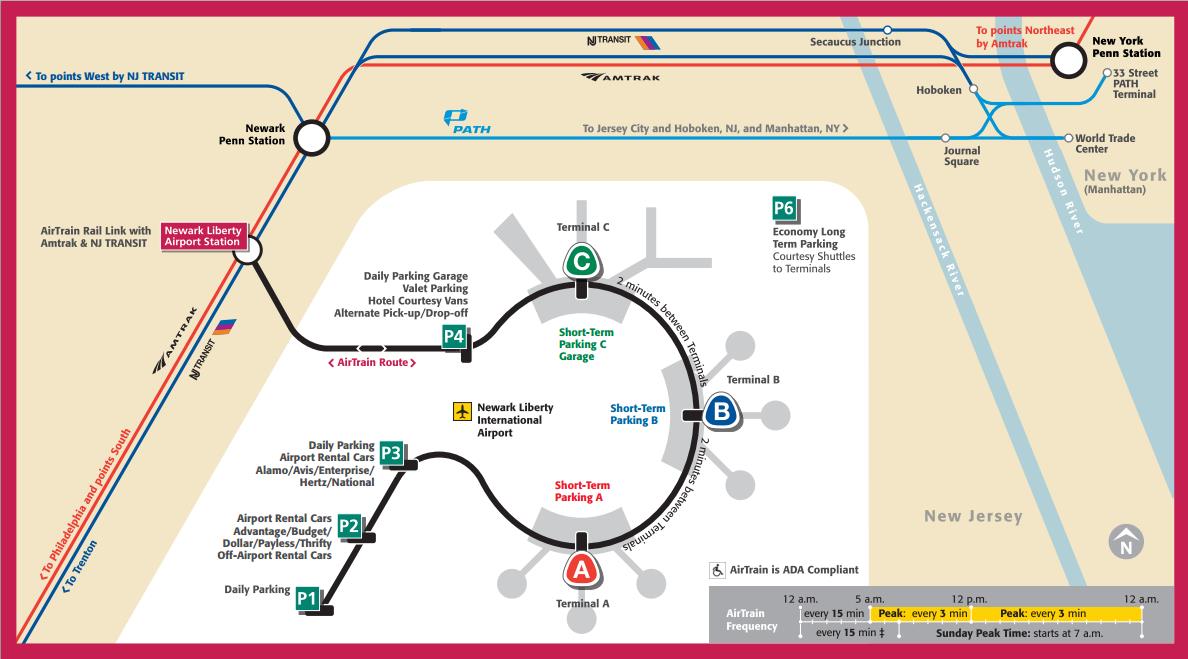
With funds at Port Authority tight, and clear capacity needs at PABT, building another two seat ride from Manhattan should attract ridership that justifies the spending. Ridership projections vary, from 2.2 million yearly passengers to 2.5 million and up to 4 million by 2020. Assuming these are all new passengers and not some of the already 2.2 million yearly passengers already taking AirTrain, yearly ridership might reach 4.7 million upon opening—or roughly 7 percent of the current yearly ridership at the Port Authority Bus Terminal. The PABT serves more than 4.7 million people in one month, yet aside from last year’s $90 million ‘Quality of Commute‘ allocation, the terminal is only slated to receive $173 million in the current capital program, none of which is designated for a new terminal or even capacity improvements at the terminal.
Alternately, one might argue that since this money has been earmarked for PATH, it should be spent on PATH. In that case, PATH also has capacity issues that are more pressing than getting passengers to the airport. PATH Ridership numbers:
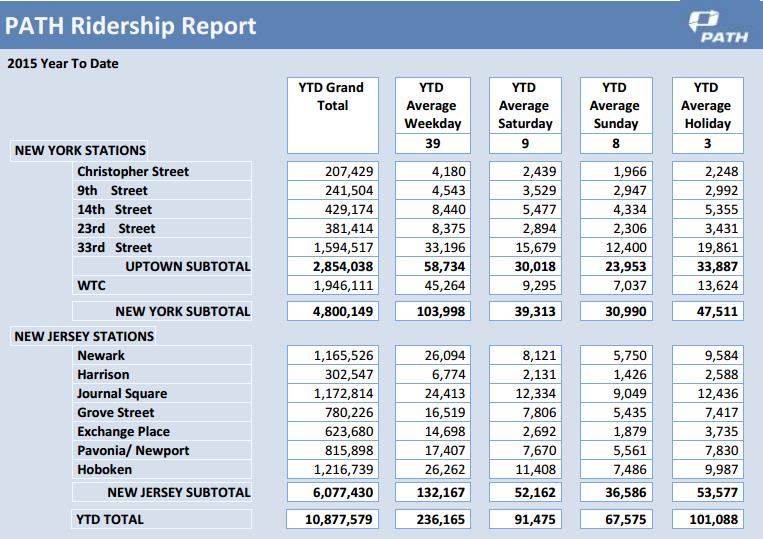
In fact, during the morning peak alone, the 33rd line and World Trade Center each serve almost five times as many riders heading to Manhattan than AirTrain serves all day. And these numbers are sure to grow with development in Jersey City, Hoboken and Harrison and at WTC. Despite these large ridership differences, the Port Authority’s Capital Plan prioritizes the PATH Extension and Harrison Station (which serves approximately 7,000 riders per day) over capacity expansion in terms of both spending and timing.
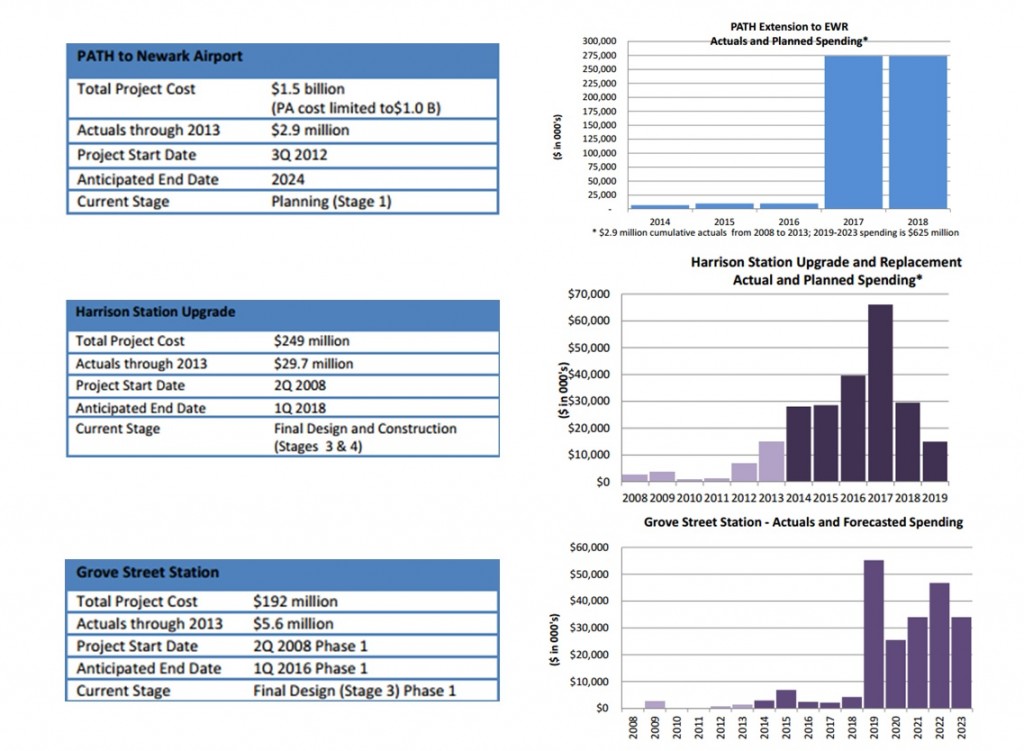
The Grove Street Station capacity expansion project will allow 10-car trains to run through the station on their way to WTC. With ridership even higher on the JSQ-33rd Street line’s seven-car trains, and Grove Street being the station where both lines meet, is it possible that for around $200 million per station, it would be worth expanding other stations on the JSQ-33rd Street line so 10-car trains can run in the near term with the $1.5 billion earmarked for the PATH Extension.
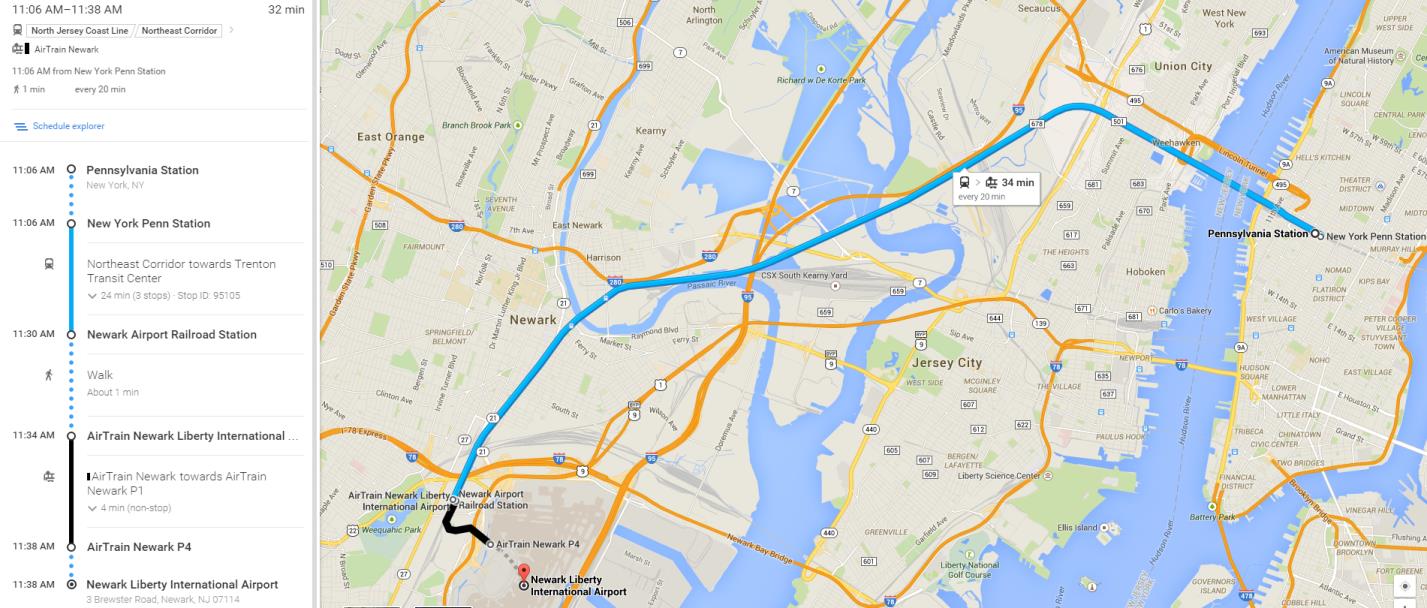

I agree with your basic premise that the money to be spent on a PATH extension to the Airport could be better spent elsewhere on PATH or elsewhere in the trans-Hudson commute world. I must quibble, however, with two of your points.
1. That uptown PATH station platforms should be lengthened to ten cars. You need to show me more data before I am convinced. There is no question that peak of the peak service on both branches is crush. But I believe the peak on uptown trains is not as long. The weekend numbers above on the 33rd Street service are relatively higher than weekend numbers on the WTC service. This suggests weekday off-peak numbers are relatively higher on the 33rd St. leg. So, that may mean that the need for ten car trains is higher on the WTC service.
2. Station rehab. – Both Grove and Harrison need rehab.,especially elevators.
[…] Newark Airport Extension? Tri-State Suggests Better Ways for PATH to Spend $1.5 Billion (MTR) […]
Yaaaaas. Moar capacity. No airport.
Rob, Harrison Station is getting rehabbed
http://www.panynj.gov/path/harrisonredevelopment.html
As someone who once worked for the Port Authority, I can tell you that the expansion of Uptown PATH is not doable, and not for the money said in this article. There is not enough station vertical circulation to expand uptown PATH stations, and the NYC subway is right on top of it to boot. Also, there is no way a 10 car train could wind its way around the switches and interlocskings, the signal blocks are not possible to accommodate 10 car trains. IT would be cheaper to build a new line. Also, parts of the uptown line date from the late 1880’s, unclear how long those tunnels will last. By contrast, both Exchange Place and WTC were redone and can handle 10 car trains, and their is a plan to increase capacity. Tri-State should stick to the facts and not do interpolations of one station cost to a whole line when they do not even consider all the elements that go into capacity. Actually, not all the PATH Newark Airport extension riders are new, a fair number are diverted from NJT and Bus.
I suspected as much and appreciate Thomas Marchwinski’s insight into the matter. Having 10 car PATH trains on the Journal Square to 33rd line would be a blessing, but unfortunately it’s not practical given funding and current structural conditions. I’m disappointed in this blog for not doing further research before publishing as it taints the rest of the well reasoned arguments.
What we need for the next generation of PATH trains is open gangways to increase capacity.
http://secondavenuesagas.com/2015/04/07/revisiting-open-gangways-as-a-solution-to-nycs-capacity-problems/
[…] know what it’s doing when it comes to transit projects? Only this year, after criticism from advocates and elected officials in New Jersey did the agency acknowledge the bus terminal crisis. If it […]
[…] $4 million is allocated for plans to advance the questionable Newark PATH extension. […]